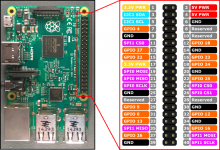Hi Ian,
I have that configuration: waveio-fifo2-isolator-dualxo-spdif and that is all powered by lifepo4.
Everything works perfectly but I do not have full isolation between the entrance and exit because there is connection between fifo2 and spdif board. Is there a possibility of soldering the extra I2C chip on the isolator's board which would enable the fully isolation between dirty side of the fifo2 and dualxo's clean side? If that is possible, could you tell me how to do it or maybe you have got some other idea. Now I'm using only the spdif exit [to external DAC]
I know that I could have been using a different spdif board but I would prefere to use yours.
I've read the thread and found nothing about it.
Greetings, Cerolele.
I have that configuration: waveio-fifo2-isolator-dualxo-spdif and that is all powered by lifepo4.
Everything works perfectly but I do not have full isolation between the entrance and exit because there is connection between fifo2 and spdif board. Is there a possibility of soldering the extra I2C chip on the isolator's board which would enable the fully isolation between dirty side of the fifo2 and dualxo's clean side? If that is possible, could you tell me how to do it or maybe you have got some other idea. Now I'm using only the spdif exit [to external DAC]
I know that I could have been using a different spdif board but I would prefere to use yours.
I've read the thread and found nothing about it.
Greetings, Cerolele.
@wcwc
FifoPi Q2 has some small improvements to optimize the signal quality. That's all.
Have a good weekend.
Ian
FidoPi Q2 is a new board or there is a firmware upgrade available that we can use on fifopi ?
Rpi doesn't support DSD512 so Volumio is probably converting to PCM or DSD256 which probably puts too much strain on the CPU.
Hi all,
For my surprise Wealas is definitely right.
When playing DSD 512 file the mpd process on RPI 3 b+ takes 102% of CPU time.
When playing DSD 256 file the mpd process on RPI 3 b+ takes 67% of CPU time an it plays good.
Is there possible workaround or any other solution?
At the moment, the only option I know of is to use a USB-to-I2S board that supports DSD512 between the RPi and the DAC board so the DAC is not directly connected to the RPi and the RPi sends the audio over USB.
Hi all,
For my surprise Wealas is definitely right.
When playing DSD 512 file the mpd process on RPI 3 b+ takes 102% of CPU time.
When playing DSD 256 file the mpd process on RPI 3 b+ takes 67% of CPU time an it plays good.
Is there possible workaround or any other solution?
Is the a pi stack sending i2s to ian's dac?
You can only get dsd128 over i2s since it has to go as dop in this configuration.
I'm not sure what the gain is to upconvert to 512 or 256, when you can only get 128?
I moved away from a pi to usb so I could do higher rates.
Is the a pi stack sending i2s to ian's dac?
You can only get dsd128 over i2s since it has to go as dop in this configuration.
I'm not sure what the gain is to upconvert to 512 or 256, when you can only get 128?
I moved away from a pi to usb so I could do higher rates.
The system is:
RPI 3 b+ -> Ian's FiFo PI with TCXO's -> Ian's DAC ES9028Q2M -> Ian's I/V board standard
What are the maximum DSD and PCM rates for this configuration?
Lot's of detail and info (including max rates) here: soundcheck's - audio@vise: RaspBerry PI - The Audio Engine - Part 6 - DSD
In your case, limitation is purely due to the RPI, if you want to remove the limitation dump the RPI. Ian's FIFO and DAC work with higher rates just fine.
In your case, limitation is purely due to the RPI, if you want to remove the limitation dump the RPI. Ian's FIFO and DAC work with higher rates just fine.
hello
where is pin 1 resp 40 on the J7 on Fifopi board pls?
pls see enclosed pic...
acc to std I would think the chipped corner in the schematic indicates pin 1 (red) and the diagonal opposit end of block (blue) would signify pin 40 as indicated in enclosed picture from Fifopi manual
however in this Dutch article where they have identical setup to mine with Raspberry Pi3B piggybacked Fifopi hooked up tp DDDAC the seem to use opposit row as pin 40
(third picture in article)
what is correct pls? pin 40 at blue or green?
For translation in your language, just check the translate option on the upper left of this pageNa de succesvolle avonturen met de Allo Kali Reclocker in - BerryStreamer met Ian Canada FiFoPi
where is pin 1 resp 40 on the J7 on Fifopi board pls?
pls see enclosed pic...
acc to std I would think the chipped corner in the schematic indicates pin 1 (red) and the diagonal opposit end of block (blue) would signify pin 40 as indicated in enclosed picture from Fifopi manual
however in this Dutch article where they have identical setup to mine with Raspberry Pi3B piggybacked Fifopi hooked up tp DDDAC the seem to use opposit row as pin 40
(third picture in article)
what is correct pls? pin 40 at blue or green?
For translation in your language, just check the translate option on the upper left of this pageNa de succesvolle avonturen met de Allo Kali Reclocker in - BerryStreamer met Ian Canada FiFoPi
Attachments
Is the older SPDIF Interface board still available for purchase? If so, does it require using the FIFOII and a clock board? Can it be used as a stand alone receiver to generate I2S from a SPDIF I put?
hello
where is pin 1 resp 40 on the J7 on Fifopi board pls?
Please see pic attached below. It can be seen Pin 40 is in the row near the outside edge of the RPi board. FIFO_Pi pins are numbered the same way.
Attachments
Is the older SPDIF Interface board still available for purchase? If so, does it require using the FIFOII and a clock board? Can it be used as a stand alone receiver to generate I2S from a SPDIF I put?
Yes, I still have a couple of them. It will need the FIFO II to function.
If you need it working stand alone, I would suggest you using the new ReceiverPi.
ReceiverPi can work either with or without a RPi.
Regards,
Ian
I'm thinking of streaming Tidal directly from a SBC (not through uPnP). But Tidal is not available as an App on Linux. So I thought Android might be an alternative as a rather light OS and since it also supports Tidal Masters. But which SBC with I2S would be right for the job? Anyone ever looked at Khadas VIM SBC's?; Khadas VIM Series | Amlogic A311D / S912 / S905X | Single Board Comput
Could this be a nice native Tidal streamer?
Could this be a nice native Tidal streamer?
Yea, that is why RPI sucks.I'm thinking of streaming Tidal directly from a SBC (not through uPnP). But Tidal is not available as an App on Linux. So I thought Android might be an alternative as a rather light OS and since it also supports Tidal Masters. But which SBC with I2S would be right for the job? Anyone ever looked at Khadas VIM SBC's?; Khadas VIM Series | Amlogic A311D / S912 / S905X | Single Board Comput
Could this be a nice native Tidal streamer?
However Ians ReceiverPi and Fifo Pi pair is source agnostic in terms of jitter.
With this you can connect whatever you like as streaming device.
I found Chromecast Audio to be most convenient instead of RPI.
Connect Chromecast Audio through Toslink to ReceiverPi + Fifo PI and forget about RPI hassle and noise 🙂
Then you will be able to use native Tidal app on your phone or PC to control Chromecast Audio.
Yea, that is why RPI sucks.
However Ians ReceiverPi and Fifo Pi pair is source agnostic in terms of jitter.
With this you can connect whatever you like as streaming device.
I found Chromecast Audio to be most convenient instead of RPI.
Connect Chromecast Audio through Toslink to ReceiverPi + Fifo PI and forget about RPI hassle and noise 🙂
Then you will be able to use native Tidal app on your phone or PC to control Chromecast Audio.
Hi TioFrancotirador,
Thanks for the advice, but I want as little as possible in between. If I do Airplay from my iPhone its is limited to 96k. I think taking I2S directly from the SBC is the nicest option.
Hi TioFrancotirador,
Thanks for the advice, but I want as little as possible in between. If I do Airplay from my iPhone its is limited to 96k. I think taking I2S directly from the SBC is the nicest option.
Then get your self Auiodlinux for RPI and use chromium browser to stream Tidal 🙂
Upnp is not too bad!
On the other hand Volumio pay version has got a direct Tidal interface which you probably aware of.
For more precise Moode questions Tim's forum might be a better place.
Cheers, Ernst
On the other hand Volumio pay version has got a direct Tidal interface which you probably aware of.
For more precise Moode questions Tim's forum might be a better place.
Cheers, Ernst
- Home
- Source & Line
- Digital Line Level
- Asynchronous I2S FIFO project, an ultimate weapon to fight the jitter

